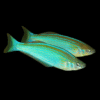-
×
-
×
-
×
-
×
-
×
-
×
Subtotal: £393.21



















Emily Carter (verified owner) –
I recently added a pair of Aphyosemion Australe ‘Gold’ Killifish to my aquarium, and I couldn’t be happier! These stunning tropical fish have brought so much joy to my tank. After about two weeks of watching them thrive, I can confidently say they’re a fantastic addition. The vibrant golden hues of the males and the graceful lyretail fins are mesmerizing to observe. What’s more, they seem to have settled in beautifully, swimming happily together and showcasing their colors.
Compared to other Killifish I’ve kept, I’ve found that these are more sociable and less territorial, which makes them ideal for a community tank. One minor concern is that they do prefer slightly warmer water, so I recommend keeping an eye on the temperature to ensure they’re comfortable.
If you’re a fellow aquarist looking to add a touch of elegance and personality to your setup, I wholeheartedly recommend the Gold Lyretail Killi. They’re perfect for both beginners and seasoned hobbyists. Plus, the shipping was prompt, and they arrived healthy and ready to explore their new home. I will definitely purchase from here again!
Emily Carter (verified owner) –
I recently added a pair of Aphyosemion Australe «Gold» to my aquarium, and I couldn’t be happier! As a passionate fish parent, I prioritize the health and happiness of my aquatic friends, and these gold killifish have brought so much joy to my tank. The males showcase stunning iridescent gold fins that flutter gracefully, while the females are equally beautiful with their subtle pastel hues.
After nurturing them for about two months, I’ve observed how they thrive in my 20-gallon freshwater setup, complete with ample plants and hiding spots. They’re quite active and engaging, darting around the tank, which brings life to the environment. Compared to other killifish I’ve kept, these have a more vibrant coloration and a friendly temperament, making them perfect for community tanks.
One minor concern I had was their initial shyness, but with time and patience, they’ve become quite bold! If you’re looking for tropical fish that are not only beautiful but also bring personality to your aquarium, I wholeheartedly recommend the Gold Lyretail Killifish. Their lively nature and relatively easy care make them perfect for both beginner and experienced aquarists. You won’t regret adding them to your collection!